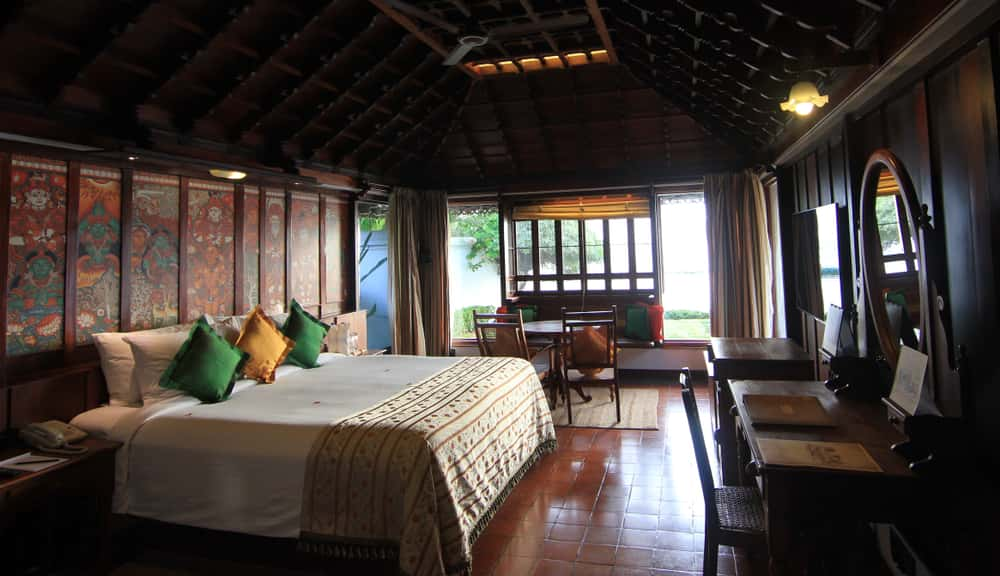With its palm-fringed waterways, tea covered hillsides and glorious sun-kissed coastline, Kerala truly is a slice of heaven on earth. A whole world away from the frenzied pace of the rest of the country, this serene state sways to its own easygoing tempo. It’s no wonder that Kerala has been dubbed ‘God’s own country’!
Framed by the lush greenery, glistening waters and tropical landscape of this lovely land, Kerala’s houses have a distinctive identity. The vernacular architecture of this region reflects its rich cultural past and showcases traditional buildings with timber, stone and brick. Common sense prevails, and homes are built to naturally combat the torrential downpours and keep the indoors cool even in the sweltering hot and humid summers.
Even today, Malayalis are fiercely traditional, and carry their roots wherever they go. If you’d like to use Kerala inspired elements in your home décor, we’re here to show you how!
The brass uruli
The ubiquitous brass uruli is found in every Mallu kitchen, handed down lovingly from generation to generation. Malayalis swear that unless the traditional payasam (a sweet dish) is cooked in this shallow circular vessel, the taste doesn’t quite come out right! While few modern families use this large vessel for everyday cooking, you will find the uruli used as a lovely decorative element in homes, filled with water and with floating flowers and candles.
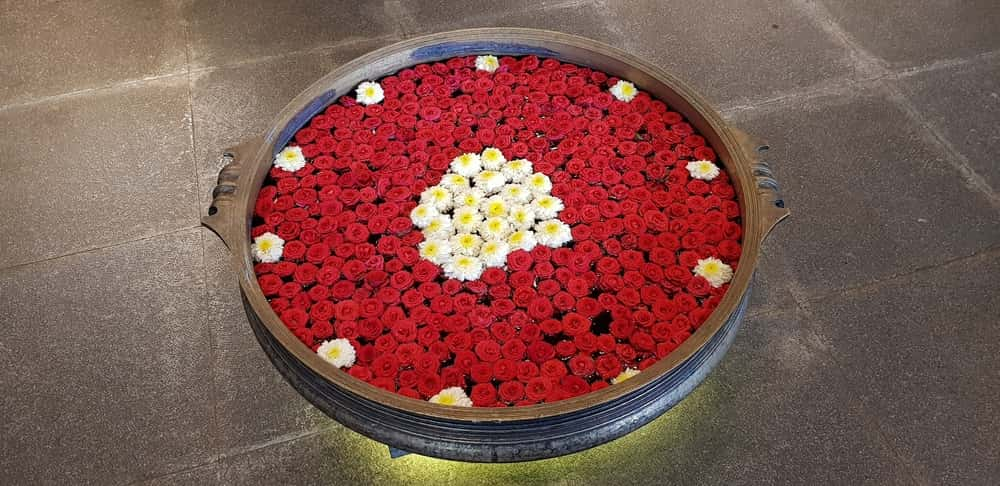
The brass nilavilakku
In a Kerala home, a lighted lamp is considered auspicious. The typical household will have the lamp lit at dawn and dusk, and this is considered to be a sign of welcome. The brass nilavilakku is the true Kerala lamp and is always lit with 3 or 5 wicks (never in even numbers, which are considered inauspicious). While vilakkus, polished to a soft gleam, are always lit in the Pooja room of a Hindu Mallu home, nowadays these lamps are also used as décor elements.
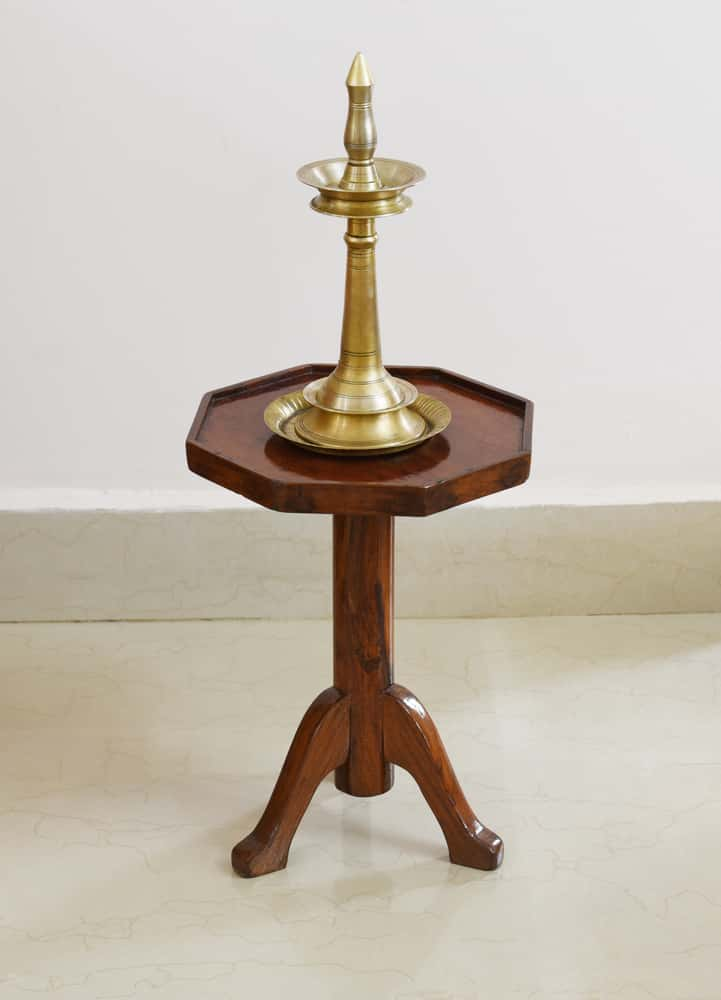
The brass kindi
Every Malayali worth their salt will also own an ancestral brass kindi. This brass container with a curved long spout was used in olden days to wash the feet of guests before they entered the home. As a symbolic sign of welcome, a kindi filled with water is also part of the evening lamp lighting rituals in a Kerala home. Today the kindi, along with other symbolic artefacts like the para (a wooden vessel used to measure rice) and the aabharana petti (a wooden ornament box) are considered as symbols of abundance and used in home décor.
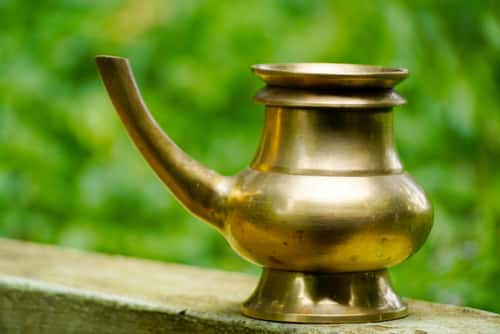
The brass bowl
In olden times, Malayalis used only brass, copper and stone vessels for cooking and the underlying health benefits were much valued. The ancient science of Ayurveda endorses the use of metal and clay utensils to add valuable natural nutrients and minerals to the food. Brass bowls, once used in cooking and food prep, are now reinvented as decorative items. Here, this shallow bowl is used as a plant holder – a lovely modern twist to its traditional usage!
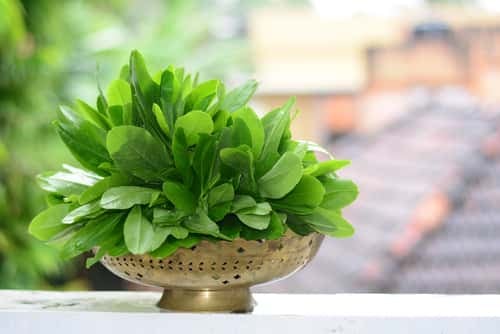
The Manichitrathazhu: the brass lock
An ornamental brass lock, called the Manichitrathazhu, would embellish the entrance door to the home in old Kerala tharavadus (ancestral homes). This brass bolt, used on double doors, was a work of art in itself. The art of creating these heavily ornamented locks is fast dying out, and connoisseurs of tradition like to use these lovely pieces to safeguard their homes.
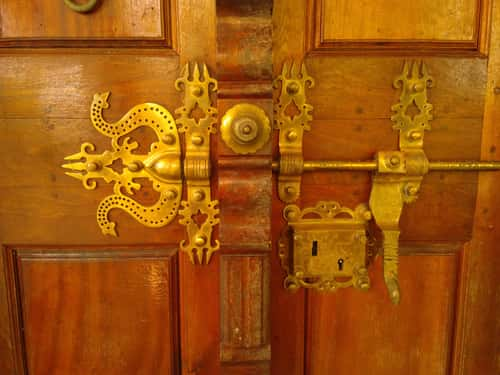 Verandahs, Courtyards and Decks
Verandahs, Courtyards and Decks
Kerala’s coastal climate is hot, humid and sweltering throughout the year. Vernacular designs used open verandahs, decks and indoor courtyards as transitional spaces between the inside and the outdoors, allowing free flow of ventilation and shielding the interior from the worst of the heat. Clay tiles on the roofs keep the inside cool, while the roof slopes protect the houses from the monsoon rains. These elements can be incorporated in modern homes too as a form of natural temperature regulation. Plenty of greenery inside and outside the house also take the edge off the harsh climate.
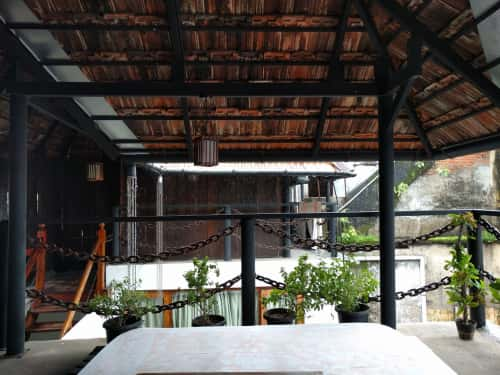
Wooden Oonjal
Made out of solid wood – usually teak or rosewood – the oonjal (swing) is also something you will find in many Kerala houses. Positioned on a verandah or in the centre of the living room, the oonjal is multipurpose and can be used as a seat as well as a bed that gently rocks you to sleep. While it’s still possible to source an original oonjal, its modern day equivalent is made of other types of wood, as forests are getting depleted and solid rosewood and teak are not easy to find. In this picture, note the beautifully panelled solid wood walls with intricate brass joinery detailing; also something that’s hard to find nowadays.
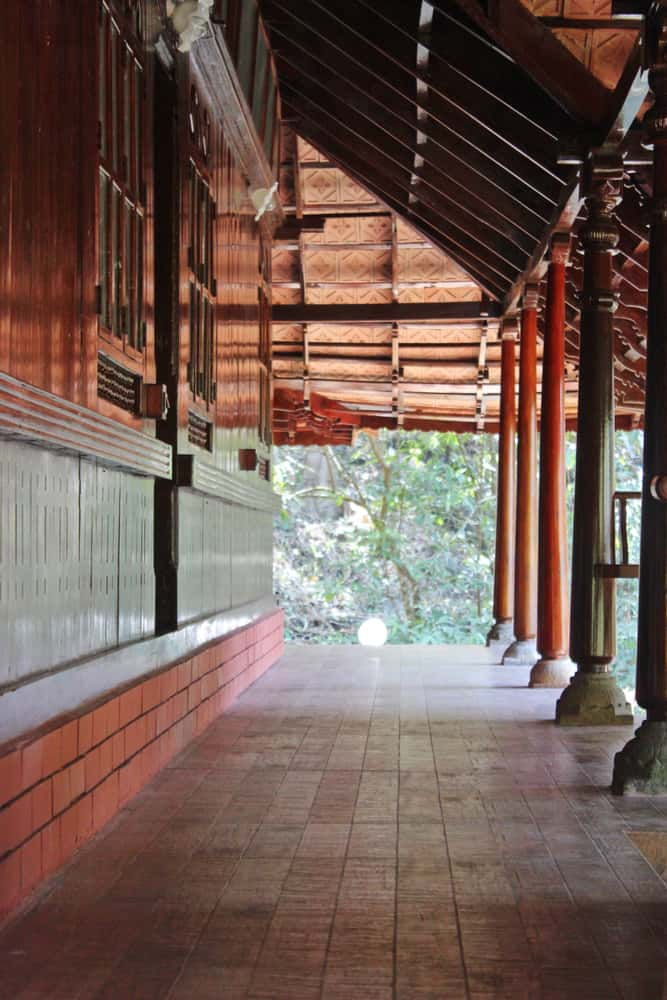
Terracotta Floors and Brick Walls
Natural materials that are found very close to the earth are preferred in Kerala homes. Brick and laterite walls, and terracotta or red oxide floors that are polished to a mirror shine are very common and speak of the Malayali ethos and deep-rooted sense of sustainable living. The older these floors are, the more beautiful they look.
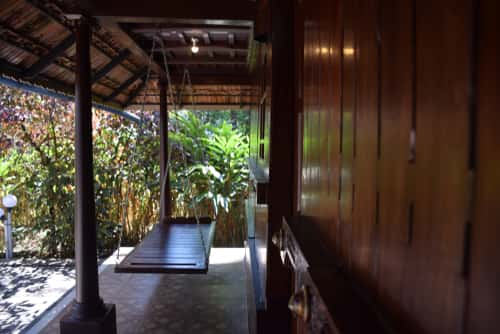
Cheena Bharani
Cheena Bharani (Chinese Pickle Jars), large earthenware pots with a black finish would commonly be found in the large storerooms of ancestral homes. These jars were said to be used by the Chinese travellers who brought savouries as offerings to the erstwhile King of Travancore. Every summer, the matriarch of the family would fill these pots to the brim with mouthwatering mango pickles and other homemade delicacies. Today, these jars are collector’s items and used as showpieces that speak of bygone days.
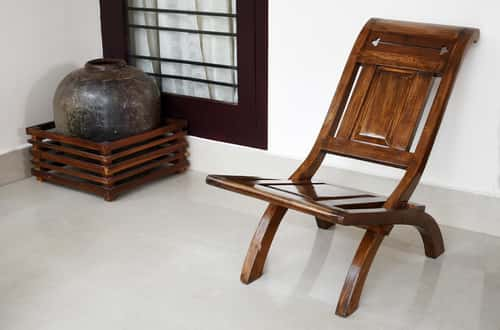 Pookalam
Pookalam
Floral decorations are a sign of abundance and welcome guests to every Kerala home. Especially during the festive season of Onam, the doorsteps of homes are decorated with stunning rangoli designs called Pookalam, that use vibrantly hued flowers and petals in symmetrical patterns. Pookalam competitions are held at Onam time, and houses vie with each other to judge which family puts up the most elaborate and innovative decoration each year.
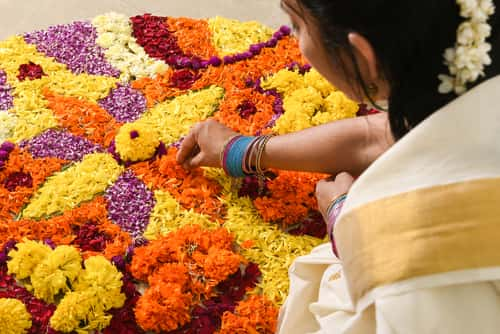
Wish to try out interior design inspired by Kerala in your home décor? We have design experts at HomeLane who can help!

